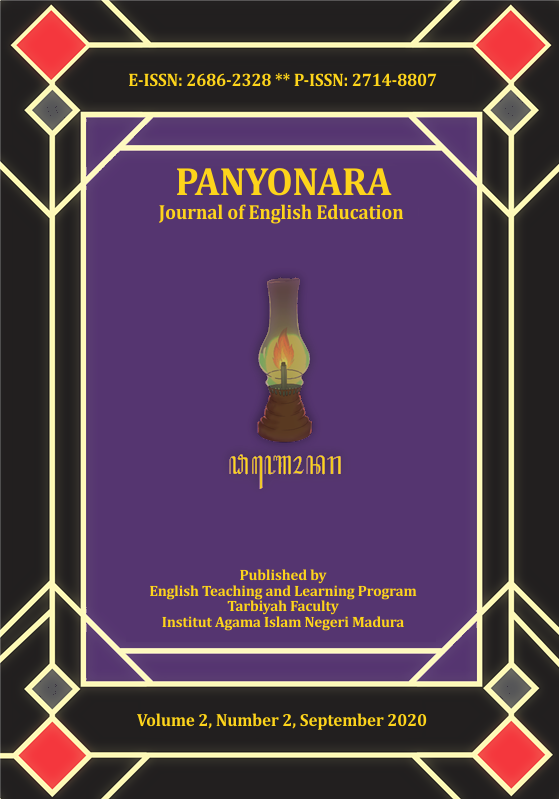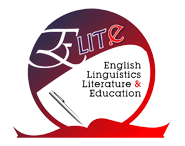An Analysis of Figurative Language in Poetry by Maya Angelou
 Abstract views: 3673
,
Abstract views: 3673
,
 PDF downloads: 3586
PDF downloads: 3586
Abstract
Figurative language is used to beautify literary work especially the poems. It can make the poems more interesting and unique. But some readers cannot identify figurative language used in poetry. The poem’s readers, read, analyze, and interpret poetry without considering the use of figurative language. The objectives of the research were to explain the kinds of figurative language used in selected poems by Maya Angelou and to explain how the use of figurative language in Maya Angelou's poems. This is qualitative research with content analysis. This approach offered to analyze data by choosing some poems by Maya Angelou, reading the poems, identifying the figurative language used in the poems, then analyzing the figurative language used in the poems. In the stage of analyzing figurative language in the Maya Angelou’s poems, the researcher was grouping them based on the figurative language used in each poem. In analyzing data, the researcher analyzed every figurative language that is found in the poems and the last drawing conclusion based on the result of data analysis. This research revealed that there were figurative languages in every selected poem by Maya Angelou. Figurative languages used in the poems were varying. Each poem had characteristics so that the use of figurative language was also diverse. This research will give advantages for the readers especially to the lectures and the college students, and it is hoped that will be more research which analyzes figurative language not only in poetry but also in another literary work
Downloads
References
Alm-Arvius, C. (2003). Figures of Speech. Lund: Studentlitteratur.
Angelou, M. (2013). The Complete Collected Poems. London: Hachette UK.
Dancygier, B., & Sweetser, E. (2014). Figurative Language. New York: Cambridge University Press.
Denzin, N. K., & Lincoln, Y. S. (2018). The SAGE Handbook of Qualitative Research (5 ed.). London: SAGE Publications.
Drew, E. A. (1959). Poetry: A Modern Guide to Its Understanding and Enjoyment. New York: W. W. Norton, Incorporated.
Fitria, T. N. (2018). Figurative Language Used in One Direction’s Album Entitled up All Night. English and Literature Journal, 5(1), 69–79. doi: 10.24252/elite.v5i1a7.
Given, L. M. (2008). Qualitative Research Method. California: SAGE Publications.
Kennedy, X. J., & Gioia, D. (2002). An Introduction to Poetry. London: Longman.
Keraf, G. (2008). Diksi dan Gaya Bahasa. Jakarta: Gramedia Pustaka Utama.
McArthur, T., Lam-McArthur, J., & Fontaine, L. (2018). Oxford Companion to the English Language. Oxford: Oxford University Press.
Nuraeni, C., & Peron, P. A. (2017). Figurative Language in Kelly Darrow’s Selected Poetry. Wanastra: Jurnal Bahasa dan Sastra, 9(2), 122–129. doi: 10.31294/w.v9i2.2480.
Ollila, B., & Jantas, J. (2006, Desember 15). The Definition of Poetry. Accessed from https://joejantas.files.wordpress.com/2011/04/the-definition-of-poetry1.pdf.
Perrine, L. (1973). Sound and Sense: An Introduction to Poetry. New York: Harcourt Brace Jovanovich.
Perrine, L. (1983). Literature: Structure, Sound, and Sense. New York: Harcourt Brace Jovanovich.
Roberts, E. V., & Jacobs, E. H. (1995). Literature. New Jersey: Prentice Hall International.
Rozakis, L. (1995). How to Interpret Poetry. New York: A Simon & Schuster Macmillan Company.
Tjahjono, T. (2010). Mendaki Gunung Puisi ke Arah Kegiatan Apresiasi. Malang: Banyumedia Publishing Anggota IKAPI.
Wainwright, J. (2004). Poetry the Basic. New York: Routledge.
The journal uses an Open Access policy under a Creative Commons Attribution-NonCommercial 4.0 International License. Authors who publish with this journal agree to the following terms:
- Authors retain copyright and grant the journal right of first publication with the work simultaneously licensed under a Creative Commons Attribution License that allows others to share the work with an acknowledgment of the work's authorship and initial publication in this journal.
- Authors are able to enter into separate, additional contractual arrangements for the non-exclusive distribution of the journal's published version of the work (e.g., post it to an institutional repository or publish it in a book), with an acknowledgment of its initial publication in this journal.
- Authors are permitted and encouraged to post their work online (e.g., in institutional repositories or on their website) prior to and during the submission process, as it can lead to productive exchanges, as well as earlier and greater citation of published work.
















